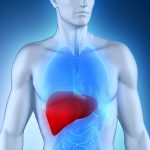
Fewer than 14 percent of American adults smoked cigarettes in 2017, the lowest level seen since data collection started in 1965, government health officials reported Tuesday. “Certainly, it is fantastic that the U.S. smoking rates continue to drop,” said Dr. Adam Lackey, chief of thoracic surgery at Staten Island University Hospital. “I suspect education is a large part of why the rates are dropping.” “Unfortunately, I suspect part of the drop is also related to more and more people switching to the various other methods of consuming nicotine,” he noted. “Vaping seems to be taking off, and I am always dismayed to have patients proudly tell me that they don’t smoke, and thank goodness for all those vaping products that they use now.” “Yes, vaping doesn’t have the high levels of tar and soot that are the major contributors to the cigarette lung cancer risk,” Lackey said. “But you are still inhaling heated chemicals into your body. And you are still getting nicotine, which in and of itself is not particularly healthy, aside from the addiction standpoint.” Meanwhile, the report unearthed some bad news along with the good. Twice as many of those who smoked lived in rural areas and smaller cities than in cities of 1 million or more — about 22 percent versus 11 percent, according to the U.S. Centers for Disease Control… read on >


















